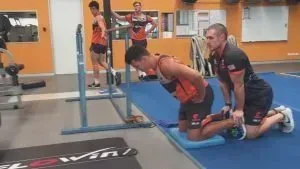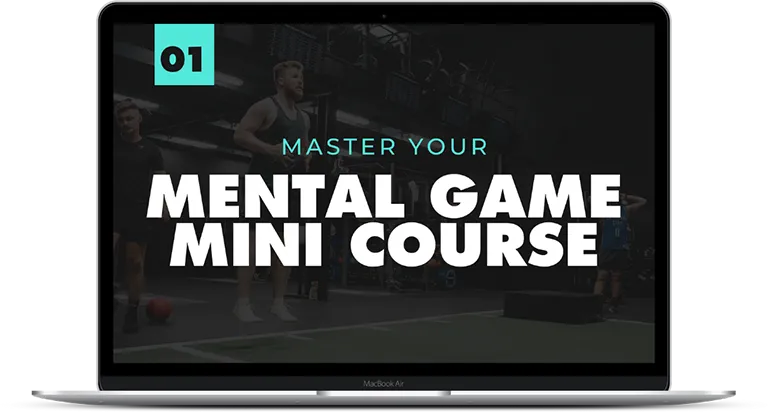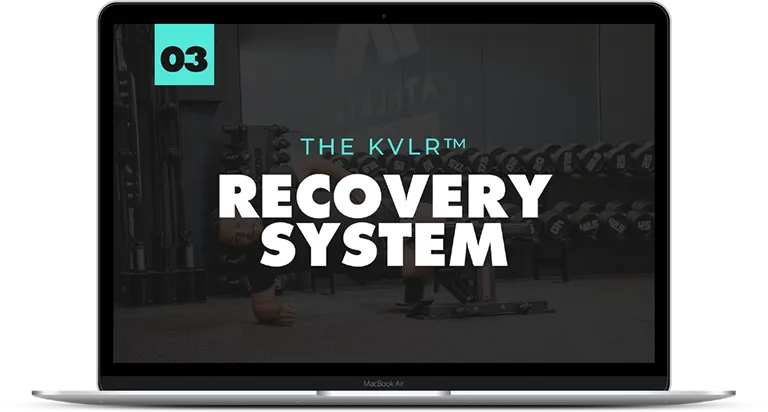Athletes Authority
Latest Blog & Insights

How Athletes Should Be Training Their Hamstrings To Avoid Injury And Improve Performance
For Athletes Who Never Want To Doubt Their Hamstrings Again…
“For The Athlete Who Never Wants To Doubt Their Hamstrings Again.”
Power, strength & speed.
How Athletes Should Be Training Their Hamstrings To Avoid Injury And Improve Performance
All of these are the sought after abilities in a majority of sports around the world, but, are we chasing the golden egg before looking after the chicken?
Within team sports, one of the most common thread among successful teams is the relatively low changes made to the starting line-up from week to week. That means, their starting line up doesn’t get injured. This makes sense as it means the coach has his/her best squad available for selection week-in, week-out where the team can gel, develop more advanced competition strategies, and get in a better state of team flow.
This all points to one this: Availability is perhaps the best ability for an athlete.
“The Best Ability Is Availability”
Soft tissue injuries and in particular hamstring strain injury (HSI), is a leading cause of missed games within numerous team sports around the world. What’s more important, however, as it is as with all soft tissue injuries, once one is sustained, the likelihood of sustaining another is significantly higher. This inability to resist further muscular damage is something that should be of primary focus to a strength and conditioning coach.
How Athletes Should Be Training Their Hamstrings To Avoid Injury And Improve Performance
The Damage Resistance Concept
How Athletes Should Be Training Their Hamstrings To Avoid Injury And Improve Performance
Damage resistance is a term that has been used lately to describe a muscle’s ability to produce high levels of contractile force and therefore reduce its likelihood of sustaining microdamage or tears, with particular reference to the hamstrings. With the arrival of the NordBord, a useful tool in quantifying the hamstring’s ability to produce force, there have been numerous research papers that have started to demonstrate a protective effect provided by hamstring strength. This finding doesn’t just pertain to uninjured hamstrings and the prevention of HSI, but to previously injured hamstrings that have acquired a large degree of strength back and have shown to have the same likelihood of injury as an uninjured hamstring. These findings create a strong foundation of reasoning for contributing time within a strength program for the improvement of isolated hamstring strength. With this said, how do we go about being prescriptive and targeted with our programming so as to elicit the best damage resistance response?
How Athletes Should Be Training Their Hamstrings To Avoid Injury And Improve Performance
The Proximal-Distal-Integrated Approach (PDI)
How Athletes Should Be Training Their Hamstrings To Avoid Injury And Improve Perfor
Due to the biarticular nature of the hamstring group, HSI can present either distally or proximally, both of which can occur with very different mechanisms and therefore need to be guarded against from a joint by joint approach, not just a hamstring approach. For this reason, we can break up our exercise prescription into proximal and distal orientated movements, therefore allow us to periodise accordingly.
Distal or knee dominant hamstring exercises can be seen as those that isolate the movement to flexion and extension at the knee joint, loading the distal attachment of the hamstring. Proximal or hip dominant hamstring exercises are those that are created from extension and flexion of the hip joint, therefore isolating the loading to the proximal attachment of the hamstring. These two isolated movements allow us to specifically overload the desired areas, with the third category of movement being an integrated exercise. Integrated exercises utilise the active lengthening and contraction of the entire hamstrings group, both distally and proximally. Integrated exercises are ultimately what we want to build up in our athletes, but to achieve this we must periodically overreach with our distal and proximal movements. This is the basic premise of our periodisation model, allowing a structured overload of both the distal and proximal attachments, building that foundational strength for integrated progressions.
How Athletes Should Be Training Their Hamstrings To Avoid Injury And Improve Perfor
When building isolated hamstring work into your current program, it is important to ensure it doesn’t reduce output within other lifts, but also isn’t left as just an add-on that athletes’ view as a non-essential. For athletes to get the most out of this style of exercise, a good buy-in must be bred to allow maximum output during eccentric aspects of loading, this is best done by treating the exercises as almost a key lift, usually positioned in the middle of a sequenced program, allowing large compound movements and plyometric work to be done first.
In regards to frequency of these exercises, two times per week looks to be an ideal loading strategy, but in-season, sufficient load can be achieved by one exposure to allow a protective effect to be maintained. One of the most important aspects to remember is each rep of most of these type of exercises are near maximum efforts, and therefore should not be prescribed at high intra-set volume, rep ranges of 3-6 appear to be most effective, with sets ranging from 2-4.
But the burning question remains, what exercises should I be doing, and where do I start?
How Athletes Should Be Training Their Hamstrings To Avoid Injury And Improve Performance
The Hamstring KVLR Protocol – Your Free 12-Week Download
How Athletes Should Be Training Their Hamstrings To Avoid Injury And Improve Performance
When I was working in pro sport, a lot of coaches in the industry looked to me for guidance on hamstring training — especially after the video of Dylan and I went viral around the world of him doing one of the advanced integrated hamstring drills I call a Razor Curl. But back then, I had to keep my cards somewhat close to my chest, because after all, hamstring health was a big influencer in athletic performance and was always seen as an advantage of ours at the Giants.
These days owning my own performance facility, I can share a lot more, so for the first time, I’m pulling back the curtain on the exact exercise progressions I used to bulletproof my boys from hamstring injury and make them ridiculously strong in the process.
Unlike most cheap gifts that are slapped together quickly, this KVLR Hamstring protocol — named after the material that goes into bulletproof vests — is a complete and comprehensive system, with everything you need to do it yourself.
There is no catch — it’s completely free and you can download it by clicking here.
How Athletes Should Be Training Their Hamstrings To Avoid Injury And Improve Performance
Summary
The concept of damage resistance and building a protective effect around hamstring musculature is becoming more abundant, and with this, there needs to be logical and effective principles for integrating into current programs. These type of exercises you can find in the KVLR Hamstring protocol do not replace the need for large compound lower body movements or well coached running mechanics. However, this type of training can build significant resilience to the exposures seen in team sport and as a result, contribute to the availability of players — the most important ability of all.
Are you hungry for a competitive edge? Unlock a new level of athleticism Click here to learn more
Our resources

Master your mental game Mini Course
Discover the mindset strategies of the World’s Greatest Athletes so you can turn your mind into a weapon of performance.

THE ATHLETES AUTHORITY RECOVERY SYSTEM
Performance = fitness – fatigue. Reduce your fatigue and recover faster with our 3-step recovery system.
SYDNEY LOCATION
© 2023, Athletes Authority | All Rights Reserved
Website & Marketing Powered By Gymini

